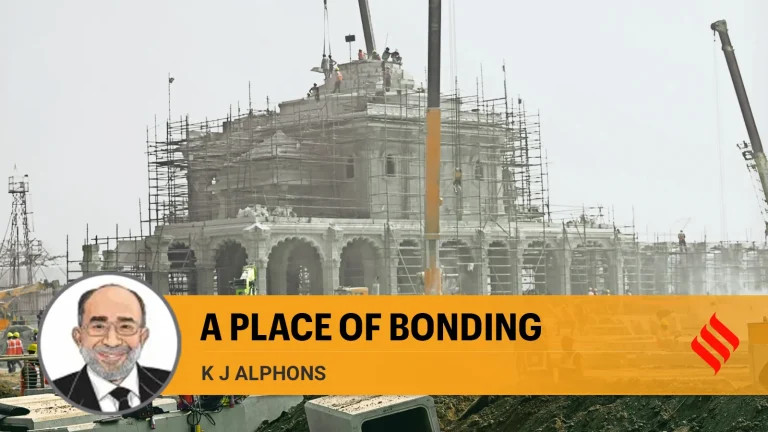I am a Syrian Christian. My roots go back to Saint Thomas, who arrived in Kerala in 52 AD and converted six families. From six families, we grew to about 15 percent of Kerala’s population, without ever converting anyone. We are truly an Indian church. Latin Christians, who constitute about 3% of Kerala’s population, were converted to Christianity by Francis Xavier in the 16th century.
I come from a deeply religious Catholic family. However, there is a lot of diversity in my family. We have a Hindu, a Brahmo Samaji, a white German Protestant, and a white American in my immediate family. My brother, George Kannanthanam, is a Catholic priest who has won countless awards for his work among the oppressed, without converting anyone. We believe that if there is a god, he must be universal and therefore unique. We do not believe that our God is bigger or better than any other god. We do not believe that we must fight battles in the name of God. Unfortunately, most murders in human history took place to prove that one man’s god was better than another’s.
I firmly believe in Jesus Christ. I greatly admire the way he stood up for what he believed in and was willing to die for it. I am a Ram admirer. Unlike the warrior gods, he is known as “Maryada Purushotham”, which means “a righteous and just human being”. He was an idealist. He does not belong to any religion. He is ours. Although born a king, he bequeathed his throne when asked to do so. He wandered in the forests and lived a sustainable existence. When he returned from exile, everyone was celebrating; the light was back in their lives.
As a practicing Catholic, I strongly support the Ayodhya temple, dedicated to Ram, for many reasons. First of all, this is where Ram is said to have been born and lived. Some rationalists and left-liberals would say that Ram is a myth. Religion is a matter of belief. If 85% of Indians believe that Ram was born and lived in Ayodhya, who are these so-called intellectuals to question this belief? Many left-liberal thinkers question the existence of Jesus. Many doctoral theses have been completed to prove that Jesus never existed. Yet Christianity survived for 2,000 years. Hinduism survived and flourished much longer. For years, the standard greeting among Hindus has been “Ram Ram”, not “namaskar”, “namaste”, “pranam” or “hello”. Ram was an integral part of the lives of the Indian people even before the beginning of the Christian era. Whether he lived in 2000 or 20,000 BC is irrelevant to a believer. Nor should it matter what a non-believer says. Therefore, if 85% of Indians worship Ram, is there anything wrong in them demanding a temple be dedicated to him? Shouldn’t democracy respect the wishes of such a large majority? Or does the concept of “secularism” prevent the majority from formulating any legitimate claim, under penalty of offending the sensitivity of the minority?
Second, there are thousands of cathedrals and basilicas around the world where Christ is venerated. In India, there are more than a hundred cathedrals; there are thousands of churches. St. George Forane Church in Ernakulam – it’s not even a cathedral or a basilica – beats the Lulu Mall, located just opposite, in grandeur. Yet when a temple is built for India’s favorite god, there is massive outrage.
Third, there is no doubt that a Hindu temple existed here. Historians are not sure who demolished the temple. Some say it was Babur; some say it was Aurangzeb. Some date the destruction to an earlier period of Muslim rulers. It doesn’t matter who did it; someone did it. The Supreme Court went into great detail, evaluating the evidence provided by the Archaeological Survey of India and concluded that this was where the temple existed and designated the land on which the temple would be built. The Supreme Court also ruled that land should be reserved for a mosque. I hope that a very beautiful mosque will be built there. Ram and the Prophet can coexist and could be the connecting point of the nation.
The writer is a former Union Minister and an advocate of the Supreme Court of India. He is from the 1979 batch of the IAS




